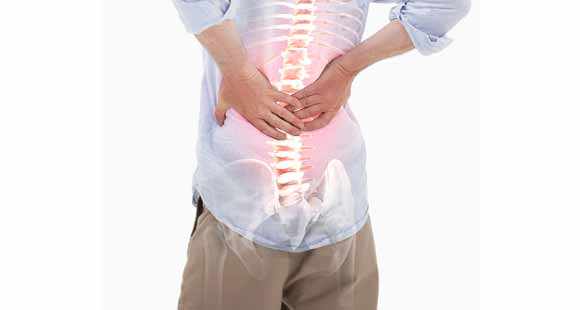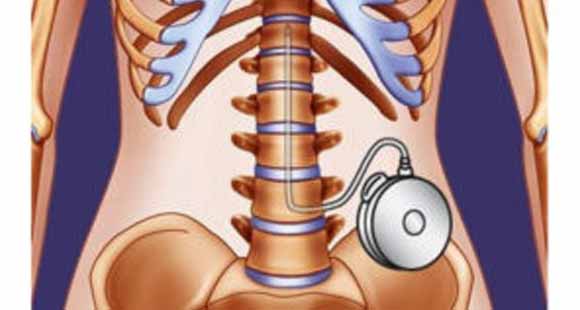A Comparison of The Pain Pump vs Spinal Cord Stimulator
The Pain Pump and Spinal Cord Stimulators are two of the most commonly used treatment modalities for chronic pain relief. The choice between one therapy over another depends on several factors, including the type of pain, duration of use, surgical risks, potential adverse effects, and cost.
What is Chronic Pain?
Chronic pain is a condition in which patients have persistent pain for at least 3 months, or in some cases longer. Chronic pain can come from any number of sources, including injury, disease, and other health problems. Neuropathic pain patients may not always be able to pinpoint the root cause of their chronic back pain. Pain management is the treatment of chronic or severe pain experienced by a patient.
What are the Most Common Signs and Symptoms of Chronic Pain?

Some people with chronic ache experience certain symptoms on a daily basis and these may include:
- Numbness, burning, tingling, or shooting sensations in one area.
- Poor sleep quality due to wakeful periods caused by ongoing discomfort.
- Aches and stiffness experienced in different parts of the body and a general overall feeling of unsteadiness.
- Depression, anxiety, low self-esteem, and frustration.
Types of Pain Pumps and Spinal Cord Stimulators
Pain Pumps
Pain pumps are a form of treating for chronic ache pain relief. The pump is inserted into a person's abdomen and contains a reservoir where medication is stored.
The medication flows through catheters that are inserted into the spinal column. Pain pumps can be used for drug delivery like opioids or local anesthetics to help with chronic ache.
However, they can also be used to treat diseases like cancer by delivering chemotherapy drugs directly to the spinal column.
Types of Pain Pumps:

There are two types of pain pumps: implantable, and external.
- Implantable pain pump- An implantable pain pump is implanted under the skin on the spinal column and is surgically inserted through an incision in the lower abdomen.
- External pain pump- The external intrathecal pumps can be used for people who cannot use it as permanent therapy.
This type of pump comes with a reservoir that is placed under the skin of the lower abdomen.
Spinal Cord Stimulation
A spinal cord stimulator is a device that delivers electrical stimulation to the spinal cord in order to pain relief signals towards the brain.
When a person has an implanted spinal cord stimulator, they are able to control their pain levels by using a handheld remote or by turning it off at night.
One type of stimulator can be implanted surgically on or near the spinal column for people who will need continuous stimulation therapy once they get it.
Types of Spinal Cord Stimulation:
- Epidural spinal cord stimulators- this type is used to treat low back pain management.
- It works by attaching wires that come out from the spine just below the implanted device and run down through the skin to an electrical pulse generator (a device outside the body) that is usually implanted in a person's lower abdomen.
- Spinal cord stimulators- this type is also used to treat chronic ache such as low back pain, but it can be used either externally or internally.
Similarities
The similarities between a pain pump and a spinal cord stimulation are that they both reduce the patient's perception of pain.
The implanted pump is usually inserted in the abdomen, in order to deliver medication directly to the spine.
Implantable pumps have been shown to be more efficacious in reducing acute back pain following surgery than other types of medication therapy, such as oral opioids.
A spinal cord stimulator is often worn on the skin near or along the spinal column.
Stimulators create electrical impulses that can help change how painful stimuli are perceived by the brain and therefore can cause pain management that has not responded to other remedy modalities, such as physical therapy.
Additional Differences
One of the biggest differences between a pain pump and a spinal cord stimulator is the duration of use. Pain pumps are usually used for short periods of time, while stimulators can be used for a longer period of time.
Durations
A pain management pump is used over an extended period of time while a spinal cord stimulator must be removed after the pain reducing effects have been achieved.
The neurological complications associated with the use of a pain spinal cord stimulator usually occur within 24 hours following implantation and do not require any remedy.
Costs
The cost depends on the type of device. A pain pump is typically more expensive than a spinal cord stimulator. The costs of the peripheral nerve surgery, training for pain pump insertion, and the required office visits are included in the cost of a pump.
A stimulation system may be expensive but it can be reused in different patients. If you would like to know more about the cost comparison between these two options, please visit our offices for a consultation.
How to Decide Which Therapy is Best for You?
The decision about which therapy is best for you should include a discussion with your physician and pain specialist. Your doctor will be able to help you decide which therapy would be best.
You should also review the risks of both therapies, the time it will take before you feel relief from either device and your medical history.
Conclusion
In summary, the best therapy modality to help with chronic ache is an implantable pump or spinal cord stimulator. Both work but have advantages and disadvantages. It is important for a person to discuss the pros and cons of each remedy option with his or her doctor before choosing the best treatment modality for him or herself.
